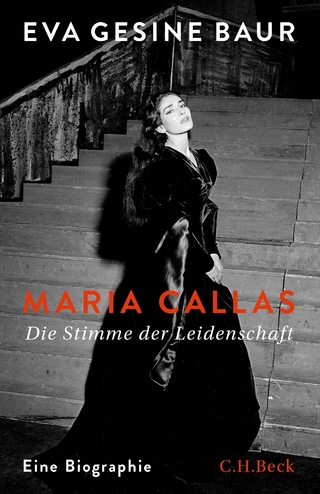
Digital Scenography in Opera in the Twenty-First Century
Routledge (Verlag)
978-0-367-55393-7 (ISBN)
Caitlin Vincent researches the future of work in the arts. Key areas of focus include opera, cultural labour, performance and technology, and equity and diversity. An acclaimed opera librettist, Vincent has been commissioned for Washington National Opera, the Schubert Club of Minnesota, the University of Connecticut, and Carnegie Hall.
Introduction Chapter One – Digitally-enhanced opera in the twenty-first century and the modes of synthesis Chapter Two – Digitally-enhanced opera in the twenty-first century and the variants of causal interplay Chapter Three – The lineage of digital scenography: Baroque origins to the twentieth century Chapter Four – The lineage of digital scenography: multimedia opera in the twentieth century Chapter Five – The projection designer and evolving creative hierarchies in opera Chapter Six – Digital scenography and evolving production design processes in opera Conclusion Bibliography
Introduction to digital scenography in opera
What is digital scenography?
Why opera?
Research methods
The modes of synthesis
Examples of practice
Interviews
Chapter outline
References
Chapter One – A new classification system for digital scenography: the modes of synthesis
Articulating the modes of synthesis: non-synthesis, partial-synthesis, and full- synthesis
Non-synthesis—San Francisco Opera, The Magic Flute (2012)
Partial-synthesis—Théâtre Royal de la Monnaie, The Magic Flute (2005)
Full-synthesis—Komische Oper Berlin, The Magic Flute (2012)
A comparison of critical responses to the three productions
Conclusion
References
Chapter Two – The variants of causal interplay
Agency: the screen as ‘performer’
Dutch National Opera, The Magic Flute (2012)—partial-synthesis
Victorian Opera, Four Saints in Three Acts (2016)—partial-synthesis
Augmentation: extension and transformation through digitalisation
The Royal Opera, Covent Garden, Don Giovanni (2014)—partial-synthesis
Victorian Opera, The Flying Dutchman (2015)—partial-synthesis
Full-synthesis extremes of agency and augmentation
Opéra de Lyon, L’Enfant et les Sortilèges (2016)—full-synthesis
Autonomy: faux-interactivity versus functional interactivity
The Metropolitan Opera, Das Rheingold (2010)—partial-synthesis
Implications for performers and audiences
References
Chapter Three – The lineage of digital scenography in opera: Baroque origins to the twentieth century
The origins of the Baroque opera paradigm
The Baroque paradigm and the interplay between performer, stage setting, and spectator
New perspectives: the scenic reforms of Ferdinando Galli-Bibiena (1657–1743)
The scenographic transition to ‘grand opera’
The ‘mystic chasm’: Richard Wagner (1813–1883) and the Bayreuth Festspielhaus
Adolphe Appia (1862–1928) and dynamic light
Looking towards the twentieth century
References
Chapter Four – The lineage of digital scenography in opera: multimedia developments in the twentieth century
Avant-garde origins
Edward Gordon Craig (1872–1966) and Enrico Prampolini (1894–1956): ‘a thousand scenes in one’ and ‘luminous forms’
Josef Svoboda (1920–2002) and the dynamic setting of the Laterna Magika
The Tales of Hoffmann (1962)
Günther Schneider-Siemssen (1926–2015) and the holograms of the Salzburg Marionette Theatre
The Tales of Hoffmann (1985)
Looking towards the twenty-first century
References
Chapter Five – The projection designer and evolving creative hierarchies
Industry recognition and acknowledgement
The traditional theatrical hierarchy: director as ultimate authority
The lateral hierarchy: collective directorate
Hierarchical variation: projection designers as the directorial authority
The evolving role of the projection designer
References
Chapter Six – Digital scenography and evolving production design processes
A benchmark of organisational and funding models
The twentieth-century standard for production design
Washington National Opera’s Das Rheingold (2016)—non-synthesis
Théâtre Royal de la Monnaie’s The Magic Flute (2005)—partial-synthesis
Dutch National Opera’s The Magic Flute (2012)—partial-synthesis
Santa Fe Opera’s The (R)evolution of Steve Jobs (2017)—non-synthesis
Komische Oper Berlin’s The Magic Flute (2012)—full-synthesis
Commonalities across the five production design processes
Production design processes and the modes of synthesis
References
Conclusion – The future evolution of digital scenography
References
Appendix 1
Appendix 2
Appendix 3
| Erscheinungsdatum | 20.07.2023 |
|---|---|
| Reihe/Serie | Ashgate Interdisciplinary Studies in Opera |
| Zusatzinfo | 2 Tables, black and white; 8 Line drawings, black and white; 18 Halftones, black and white; 26 Illustrations, black and white |
| Verlagsort | London |
| Sprache | englisch |
| Maße | 156 x 234 mm |
| Gewicht | 340 g |
| Themenwelt | Kunst / Musik / Theater ► Musik ► Klassik / Oper / Musical |
| Kunst / Musik / Theater ► Musik ► Musiktheorie / Musiklehre | |
| ISBN-10 | 0-367-55393-7 / 0367553937 |
| ISBN-13 | 978-0-367-55393-7 / 9780367553937 |
| Zustand | Neuware |
| Informationen gemäß Produktsicherheitsverordnung (GPSR) | |
| Haben Sie eine Frage zum Produkt? |
aus dem Bereich


